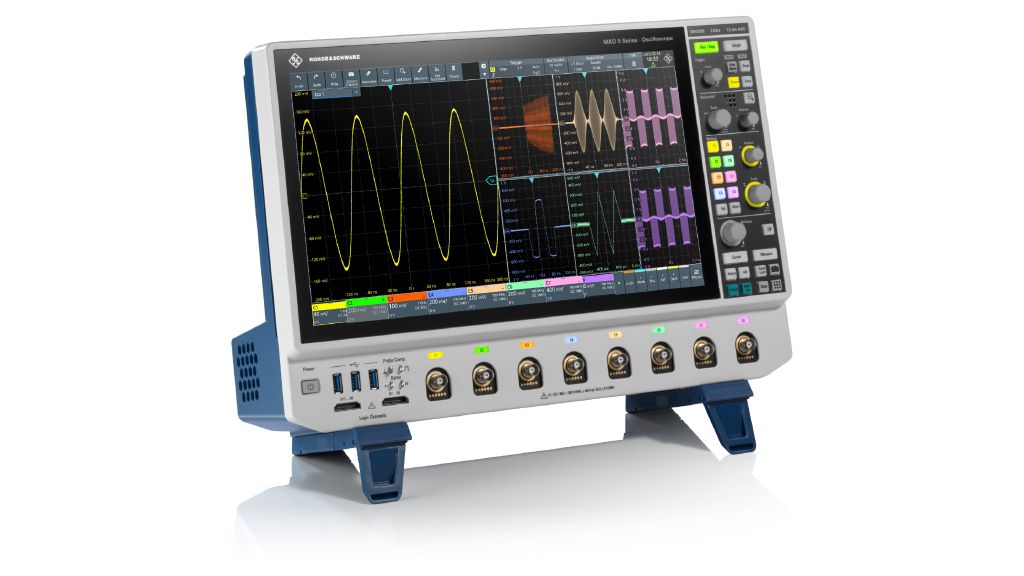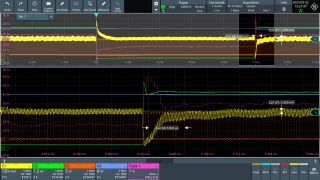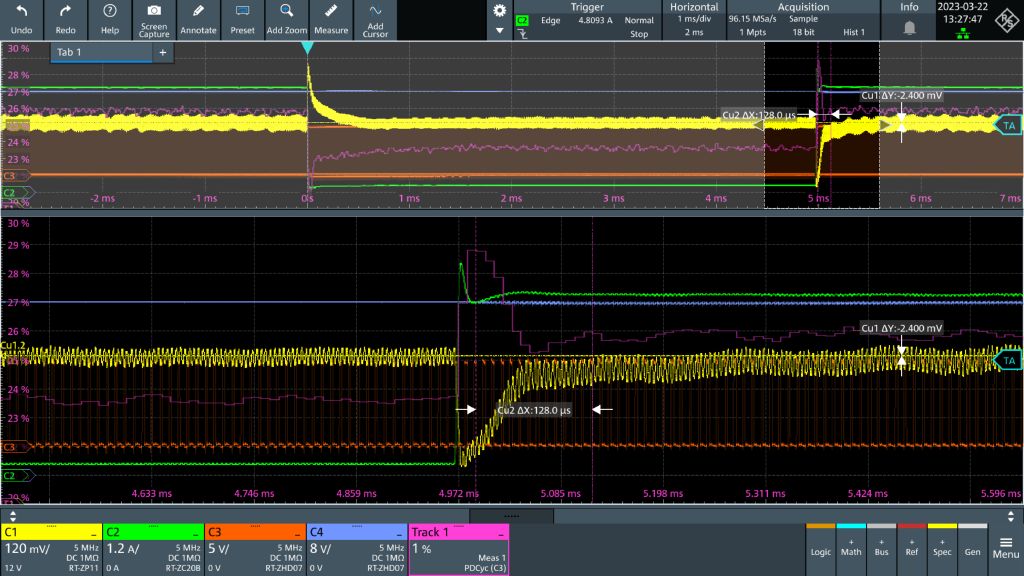Application
A DC/DC switching converter in a full bridge topology with synchronous rectification showcases the track function. The isolated converter operates at a switching frequency of 100 kHz and converts 48 V input voltage to 12 V output voltage. The output current is set to 8 A maximum and the output load step is generated with an electronic load.
Device setup
Before applying the load steps at the converter output, several tasks need to be completed beforehand to visualize the positive duty cycle as a track waveform:
- A channel setup with a probe selection
- Definition of a trigger to catch load step events at the controller output
- Activation of the positive duty cycle measurement function and definition of reference voltage percentage levels (e.g. 20 %, 50 %, 80 %)
- A sufficient sampling rate ≥100 Msample/s must be defined to accurately measure a PWM signal with sharp edges
- A recording length sufficient to catch a whole sequence (at least one current step from low-to-high and another form high-to-low)
- Activation of track function within the measurement sub menu and optimization of vertical scaling
Measuring the transient load
After completing the setup, configure the electronic load to apply a load step between a low current value (20 % of maximum load) and a high current value (80 % of maximum load). As soon as the trigger detects a valid trigger condition, the waveforms will appear on the screen as illustrated in Figure 3. The top window shows the acquisition of two load steps in either direction. The output voltage is measured on channel 1 and the output current is measured on channel 2. The PWM control signal (channel 3) and the track waveform for the positive duty cycle are also displayed.
The zoom window shows that output voltage drops only for approximately 300 μs before reentering steady state operations. The deviation between the 20 % and 80 % loads in a steady state is only 2.4 mV as measured by the cursor function. The track waveform shows a different level (26 % instead of 24 %) after the converter enters a steady state. The deviation reveals an effect, which does not meet the expectations described in Figure 2. According to the definition and theory, the duty cycle should be independent of the load current.
Reviewing control theory shows the 2 % deviation comes from higher conduction losses caused by higher output current. The higher losses are mainly generated in the transformer and output rectifier. The additional losses need to be equalized by increasing the positive duty cycle and the track function allows this complex measurement task to be performed.









